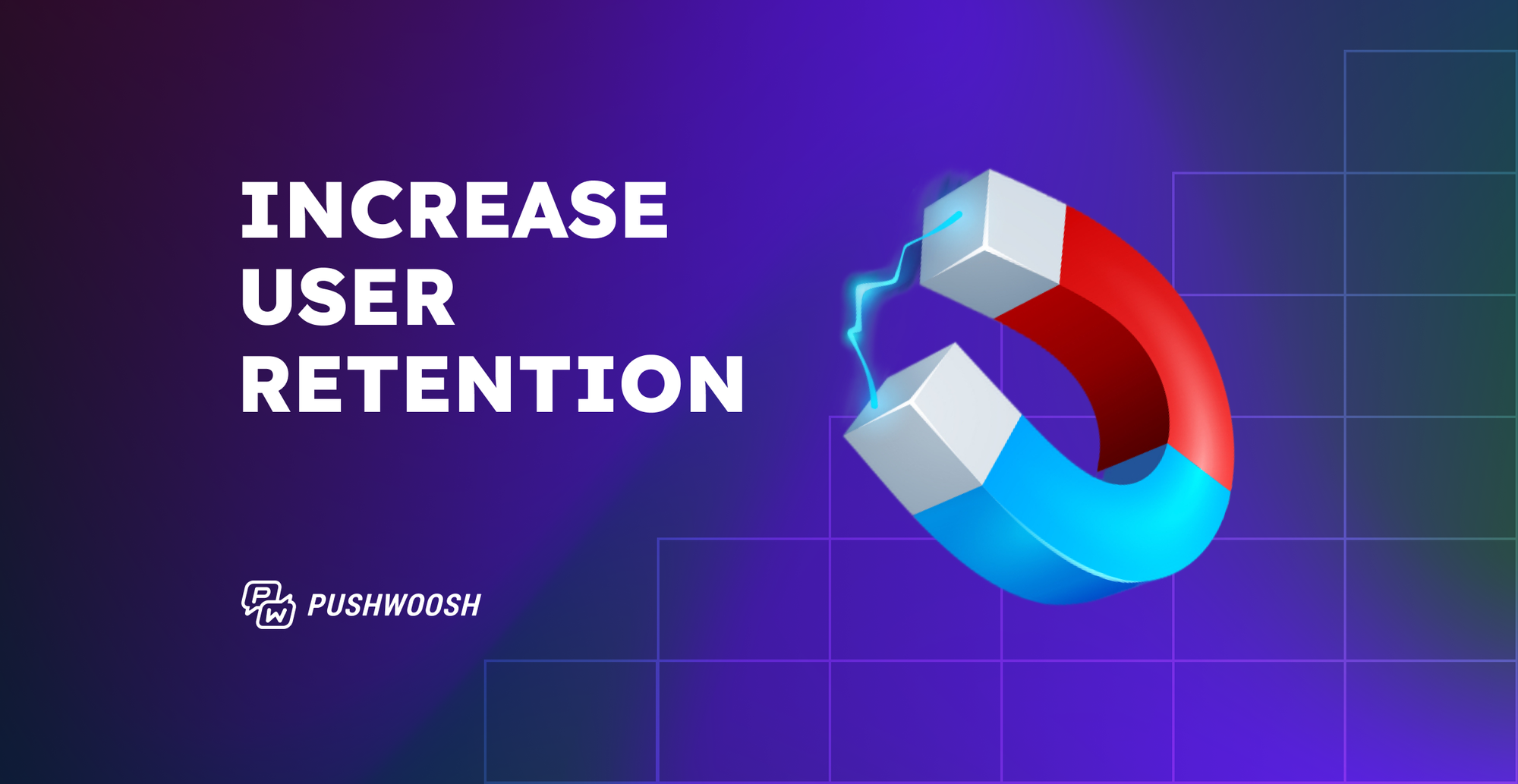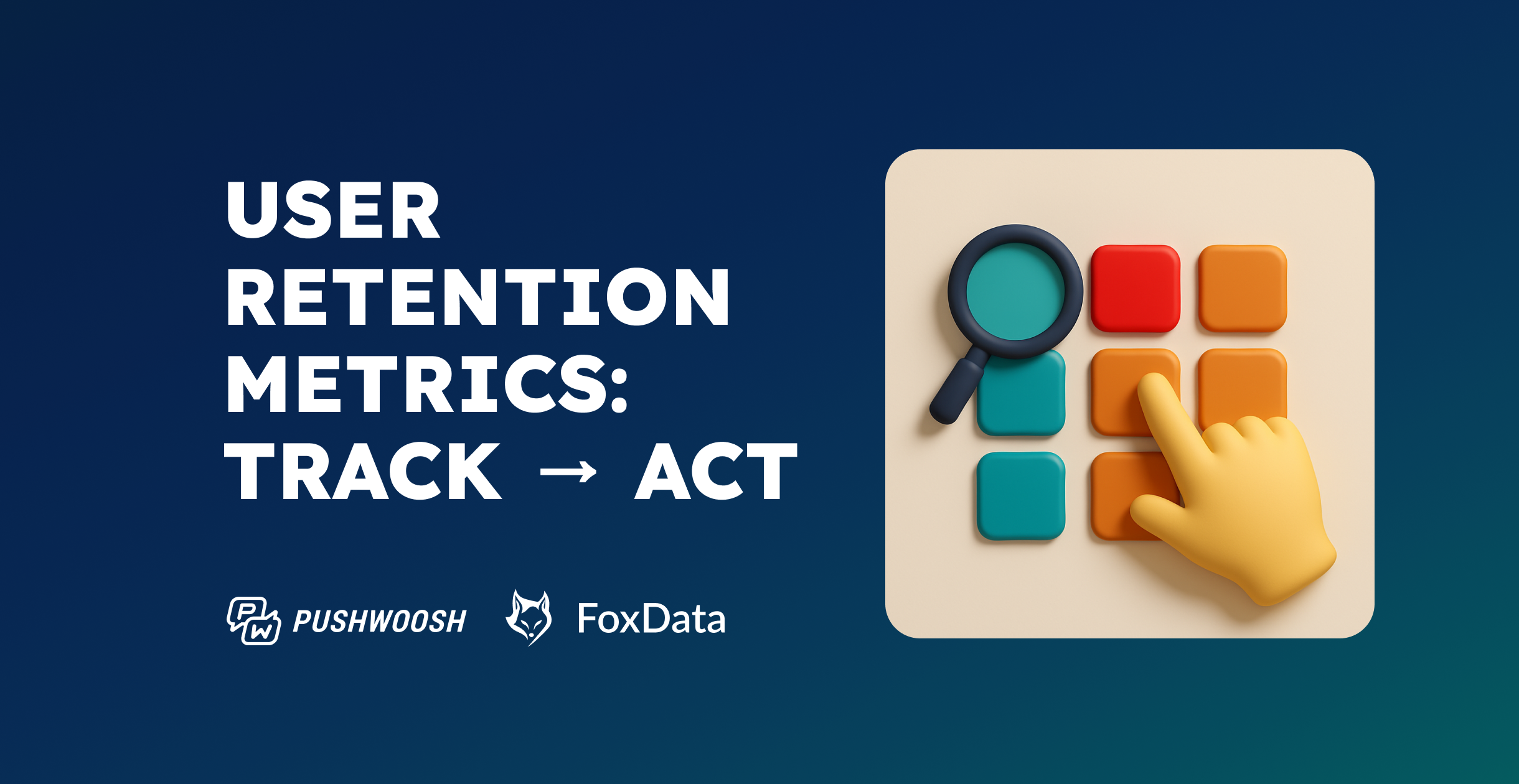How to increase app retention rate: Benchmarks & strategies for 2025
User retention is a topic for every marketer. Every time, all the time. And for a good reason, too! After all, we all know it’s not enough to capture customer attention once – instead, the real work begins with trying to get them to stay with your app and pass on the good word.
Whether you’re just starting to analyze your app retention or looking for ways to boost it, this guide will walk you through the latest benchmarks and the retention strategies that work in 2025. You can also jump to the industry benchmarks section if you’re ready to compare your performance right away.
A quick recap: everything you need to know about app retention
What is user retention?
User retention shows how many people stick around and keep using your app over time. It’s a lot like customer loyalty, too. Getting someone to download your app is the first step. But what really matters is whether they keep coming back and using it regularly.
High user retention shows that your app is valuable and engaging to its target audience. It means they find the app useful, fun, or beneficial enough to keep using it.
What is a user retention curve?
A user retention curve is a visual representation of retention over time. It shows how quickly users drop off after installing your app and when the retention rate begins to stabilize.
The flatter the curve, the better — it means users are sticking around instead of churning early. Sharp declines, on the other hand, often point to onboarding or activation issues. The retention curve is especially useful for cohort analysis and evaluating the long-term impact of your engagement and retention strategy.
Why increasing app retention matters for app growth
User acquisition grabs attention. Retention builds momentum. Apps that fail to retain users in the first week lose over 80% of them — and that’s a steep price to pay when acquisition costs keep climbing.
App retention is a direct line to a higher lifetime value (LTV), lower churn, and sustainable growth. No matter your industry, keeping users engaged translates to stronger business performance.
How to calculate user retention rate
The most straightforward (and the most popular) approach is simply to divide the total number of MAUs by the total number of installs. As such, if 1000 people downloaded your app on Day 0, and you had 200 monthly active users in April, your user retention rate is 20%.
There is, however, a more insightful way to dig deeper into your app usage. At Pushwoosh, we use a different app retention rate formula that reveals more precise details about your customers’ behavior on a specific day.
App retention formula
To calculate app retention, take the percentage of users who opened the app on a given day (Day 1, Day 7, Day 30) and divide it by the number of users who installed the app on Day 0.
For example, let’s say you want to measure one-month retention. On July 1 (or any date at least 30 days ago), 1,000 users installed your app. Then, you check how many of them opened the app on July 30. If 350 users did, your retention rate for that period is:
350 ÷ 1,000 × 100% = 35%.
You can repeat this measurement for each month in a quarter or over the course of a year to track how your app’s user retention evolves over time.
💸Learn how to set up an effective retention campaign with Pushwoosh to have your customers coming back for more!
What is a good user retention rate for mobile apps?
According to the Pushwoosh Benchmarks Study 2025, the average Day 7 retention rate on iOS is 6.89%, dropping to 3.10% by Day 30. For Android, the numbers are slightly lower: 5.15% on Day 7 and 2.82% on Day 30.
Of course, retention is influenced by a range of factors—app category, audience behavior, lifecycle stage, and how well brands engage users from day one. While these averages give us a pulse check, retention can vary widely. Leading apps in mature industries often outperform the norm, and some niche categories may naturally see steeper drop-offs.
So, what is a good retention rate for an app? The only way to answer that is to zoom into the specifics. Let’s break it down by industry to see where your app stands—and what benchmarks you should be aiming for.
Mobile app retention benchmarks 2025: Trends & insights
Overview
Across almost all categories, D1 retention rates are quite low, often falling below 20%. This indicates that users quickly lose interest or fail to find enough value in the app to continue beyond the first day. Driving immediate engagement through impactful onboarding and personalized experiences is crucial for extending user retention.
Another significant drop in retention occurs by Day 7 and becomes even more pronounced by Day 30, when many app categories retain less than 1% of their initial users. Such a steep decline suggests either a mismatch between the acquired audience and the app’s value proposition or ineffective user engagement and retention strategies.
Platform-specific insights
Generally, iOS apps tend to retain users slightly better than Android. The only exception is Telecommunications, where retention rates are higher on Android.
This may be attributed to platform-specific user behavior and expectations. If you’re deciding whether to invest in a native application or expand with a cross-platform product, analyzing retention trends across platforms can help refine your strategy.
Industry-specific insights
The highest D1 retention rates are observed in the News industry, with iOS leading at 35.88%.
It’s worth noting that Action Games have one of the highest retention rates among all apps on iOS but the lowest on Android.
Have you compared your product against our mobile app retention benchmarks yet? Because we’re ready to dive even deeper with some evergreen strategies that will help you increase your CLV and drive more engagement than ever!
How to continuously increase your app’s user retention rate: best practices & real-life examples
Pushwoosh Customer Journey Builder can help you drive higher engagement and retain more users beyond Day 30 of their lifecycle
If your goal is to ensure your users stay engaged and invested in your app during the first month and beyond, you can adopt one of the two proven strategiess: quick wins that imply using growth tacticsor long-term investment through consistently delivering more value.
| Quick wins | Long-term tactics | |
|---|---|---|
| Overview | These tactics work best on the folks who seriously consider canceling your subscription or removing your app. These moves are easy to measure but work best as a last resort, not as a reliable ongoing retention strategy. | These efforts need to be consistently embedded into your marketing routine. They are harder to measure but do prove invaluable in capturing users’ attention and driving retention long before they even consider unsubscribing. |
| Examples | Send notifications in advance before the subscription or the trial period expires Promote long-term or lifetime subscriptions over their shorter alternatives Provide users with a special discount right before their subscription or trial is about to expire. | Provide value as soon as possible, ensuring your onboarding process sets positive expectations; Segment your customers based on their in-app behavior and deliver personalized value in the form of educational content, special offers, or dedicated training to them; Ensure high technical quality of your software and invest in supportive customer success teams for the most positive user experience. |
Of course, there are other common practices you can try to incorporate into your marketing strategy in order to increase user retention rates. For example, you could:
- Ask for customer feedback within or outside of the app to find out what you could improve for other users;
- Send push notifications to remind users that the app is still installed on their device (make sure to make the reminder as useful as possible not to cause an unsubscribe);
- Engage users with habit-building gamification within your mobile app, etc.
🤝Learn more about how to boost your customer retention rate with the right CRM
Yet, once again, everything will depend on the industry you operate in. That’s why we gathered some nifty examples from our customers’ campaigns and popular apps to show you how some of the most in-demand niches stay connected with their audience and drive high app retention rates.
E-Commerce & Retail
In e-commerce, where the competition is fierce, time is of the essence, and the best way to ensure you keep your audience engaged and grow customer retention is to reach them at the right moment. The second must-have component is a good incentive.
For example, you can throw in a free delivery for all the orders made through an app to entice customers into reactivating like La Redoute did in the example below:
Another good way to leverage hyper-personalization for e-commerce and increase user retention is to appeal to customers’ previous shopping experience with dedicated product recommendations, similar to what SHEIN did here:
Finance & Banking
There are plenty of opportunities for mobile applications operating in the finance and banking industry to increase their user retention rates. The most important tip is to keep your clients’ interests high. Pun intended.
For example, you can take a page from Revolut’s book and engage your customers with better-personalized saving rates, like in this example:
Or you can appeal to innovators in your target audience and engage them with a promise of unique features they’d be the first to test as long as they use your app frequently:

Gaming
As our report has shown, mobile game retention benchmarks drop significantly after the first day of use.
This means it’s not enough to get a user to play your game. Instead, you need to establish a reward system that will encourage them to come back for more over and over again. Fortunately, there are plenty of opportunities for you to do just that!
For example, you can implement a system of daily rewards that encourage users to log in and play every day in order to unlock awesome prizes the longer they stay engaged, just like Candy Crush does:

Media & Entertainment
In Media, Streaming, and Entertainment industries, you inevitably compete with behemoth brands like Netflix and Spotify. In fact, even those brands are endlessly competing against each other, barely maintaining their median monthly retention rate of around 2%.
That’s why it’s as essential as in other industries to get to know your target audience and appeal to their unique acquired tastes. Here is a good example of how Spotify designs playlists “just for you” based on the tracks you’d listened to previously:

Subscription-based apps
User retention is particularly important for subscription-based services, as for them, retention directly translates into paying customers. That’s why it should be one of your top priorities to have a retention strategy in place that drives engagement and consistency, as well as builds habits to ensure the user stays with your service for as long as possible.
Here is an example of an in-app message by Duolingo that encourages people to build up their language learning streaks consistently:
And here is another one by Ewa, setting an excellent example of how mobile push notifications with daily reminders help retain more customers:

Increase your user retention effortlessly with Pushwoosh
As you can see, communicating with the user is at the heart of each strategy. And one of the best ways to stay connected with your audience is through omnichannel mobile communications, sent in the form of push notifications, in-app messages, emails, or even SMS.
Pushwoosh can become your trusted partner in driving user retention and supporting you at every stage of your customers’ journey. Here is just a brief overview of how our automation solutions can help:
- Build lifecycle messaging campaigns that will run on the background of your marketing efforts;
- Set up trigger events that will send off relevant communications to help you engage more customers at the right moment and increase retention;
- Analyze user behavior inside your app and identify those at risk of churn;
- Ensure personalized omnichannel experiences for your customers so that they receive transactional updates and relevant marketing communications across the channels of their choosing.
Sounds exciting? Learn more about Pushwoosh on a personal demo:












